SA locals urged to refrain from picking wild mushrooms, as poison hotline calls spike
Mushrooms are sprouting up all over the greater Adelaide area – but many are poisonous and definitely should not be eaten. SEE THE LIST
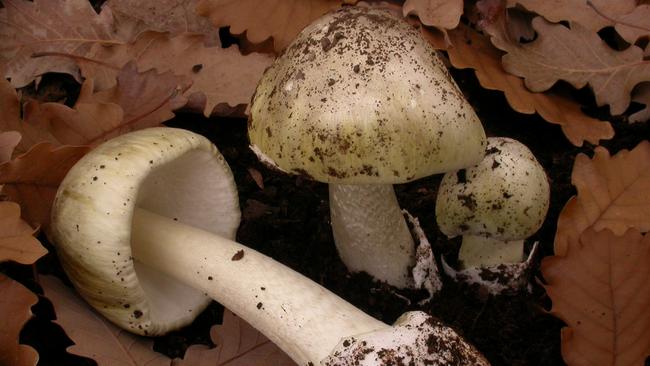
- Mapped: Dog friendly trails in greater Adelaide and the Hills
- Mount Barker Council to expand cycling network
At least five children have been referred to hospital after eating poisonous mushrooms this year, prompting health officials to issue an urgent warning.
And the problem is not limited to children, with a adult couple found collecting poisonous mushrooms in Mount Lofty Botanic Gardens on Friday, ignoring clear warning signs across the park.
The mushrooms, believed to have included death caps, were later surrendered to a park ranger.
According to SA Health, the Poisons Information Hotline has received more than 30 calls since April, two-thirds of which were about mushroom poisoning involving children under the age of five.
Recent COVID-19 restrictions and favourable weather conditions had created a new interest in mushroom foraging in the Adelaide Hills, with occasional dangerous results, according to David Simon from SA Health’s Scientific Services Branch.
“It’s especially important to keep an eye on children and pets outside as mushrooms are easily in reach and can look interesting and attractive to eat,” Dr Simon said.
“While some wild mushrooms might look like common varieties found on supermarket shelves, ingesting them can cause serious illness or even death.
“Mushroom poisoning causes violent stomach cramps, abdominal pain, nausea, vomiting and diarrhoea … and can take several hours for the symptoms to appear and last for up to three days.”
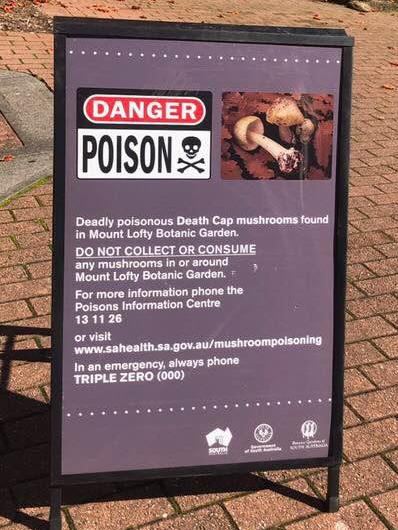
SA Health records show there has been a steady increase in hospitalisation for mushroom poisoning over the past five years, with a total of 16 cases reported last year. That was up from 10 in 2018, and only seven in 2015.
The number of children aged under 17 hospitalised has also increased, from just two in 2017 to 17 last year.
When it came to cases of mushroom poisoning among adults, those born overseas were often at greater risk.
Botanic Gardens senior botanist Teresa Lebel said death caps were often mistaken for the paddy straw mushroom, widely used in Asian cuisine.
“People born overseas, particularly from Asian countries, should be aware that these highly toxic mushrooms can look like edible mushrooms,” Dr Lebel said.
She said poisonous mushrooms sprouted across South Australia just after heavy rains, usually between late-summer and early-winter when the earth was still warm.
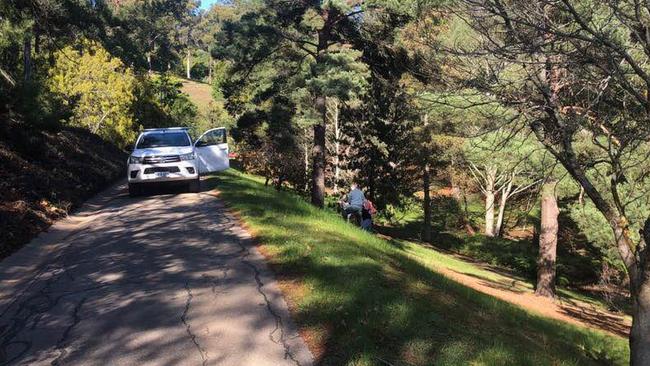
In the Adelaide Hills, areas of concern include the Mount Lofty Ranges, Mount Lofty Botanic Garden, Crawford Forest Reserve and other state and national parks.
A Department for Environment and Water spokesman said removing wild mushrooms from national parks and botanic gardens was “strictly prohibited”.
“Park rangers and botanic gardens staff regularly patrol our parks and gardens, and fines apply for removing plants,” he said.
“Under the Botanic Gardens and State Herbarium Act offenders face fines of up to $2000 and six months imprisonment, while under the National Parks and Wildlife Act fines of $135 apply.”
If you suspect you or someone you know has eaten a wild mushroom, contact the Poisons Information Centre on 13 11 26.
Top five poisonous mushrooms in the Adelaide Hills
1. Death cap mushrooms (Amanita phalloides)
Usually grow near established hardwood trees – most commonly under oak trees. Death cap mushrooms are reported to grow, peel and taste just like a harmless field mushroom and are sometimes mistaken for edible straw mushrooms, used extensively in Asian cooking.

2. Yellow-staining mushrooms (agaricus xanthodermus)
This mushroom looks very similar to the cultivated mushroom (sgaricus bisporus) and edible wild mushrooms such as the field mushroom (sgaricus campestris). It can grow in large clumps in lawns and gardens.
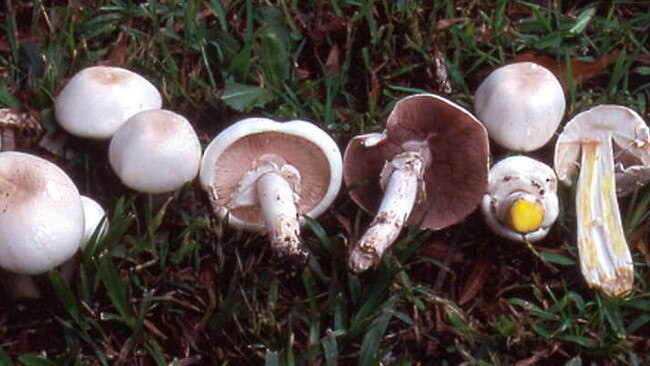
3. Ghost fungus (Omphalotus nidiformis)
The ghost fungus is most notable for its bioluminescent properties. It has a fan or funnel-shaped body with cream-coloured caps, overlain with shades of orange, brown, purple, or bluish-black. It is generally found growing near dead or dying trees.
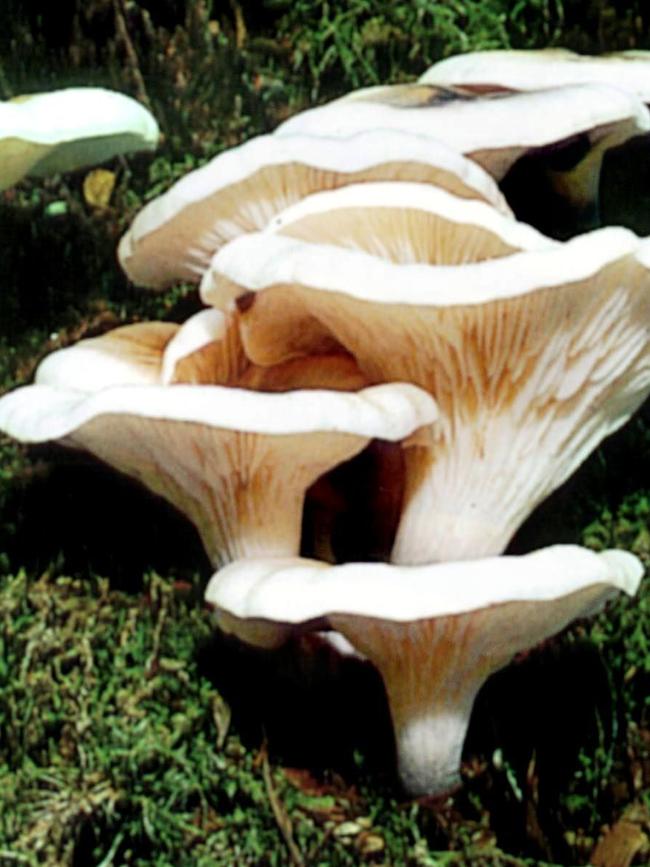
4. Poison pie (Hebeloma crustulinoforme)
Commonly known as poison pie or fairy cakes, this gilled mushroom has a radish-like smell and bitter taste. It is generally found in open woodland.

5. Fly agaric (amanita muscaria).
Arguably the most iconic toadstool species, the fly agaric is a large white-gilled, white-spotted, usually red mushroom. It is traditionally used to attract and kill flies and grows under pines.

